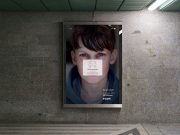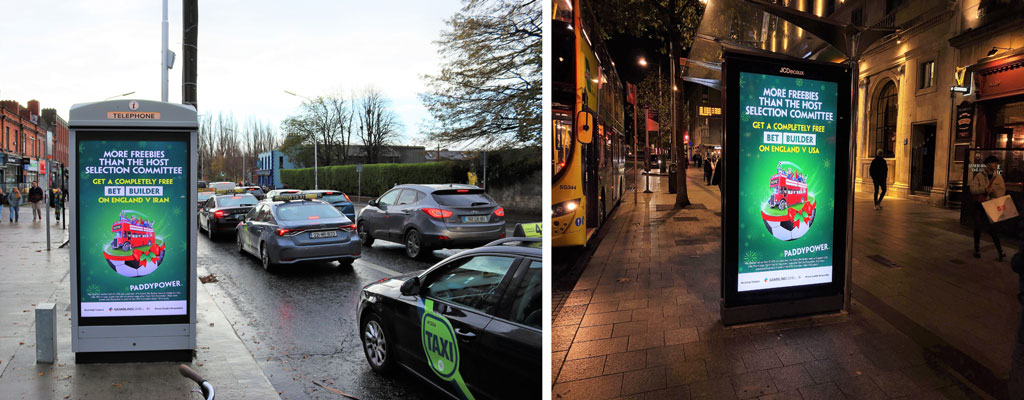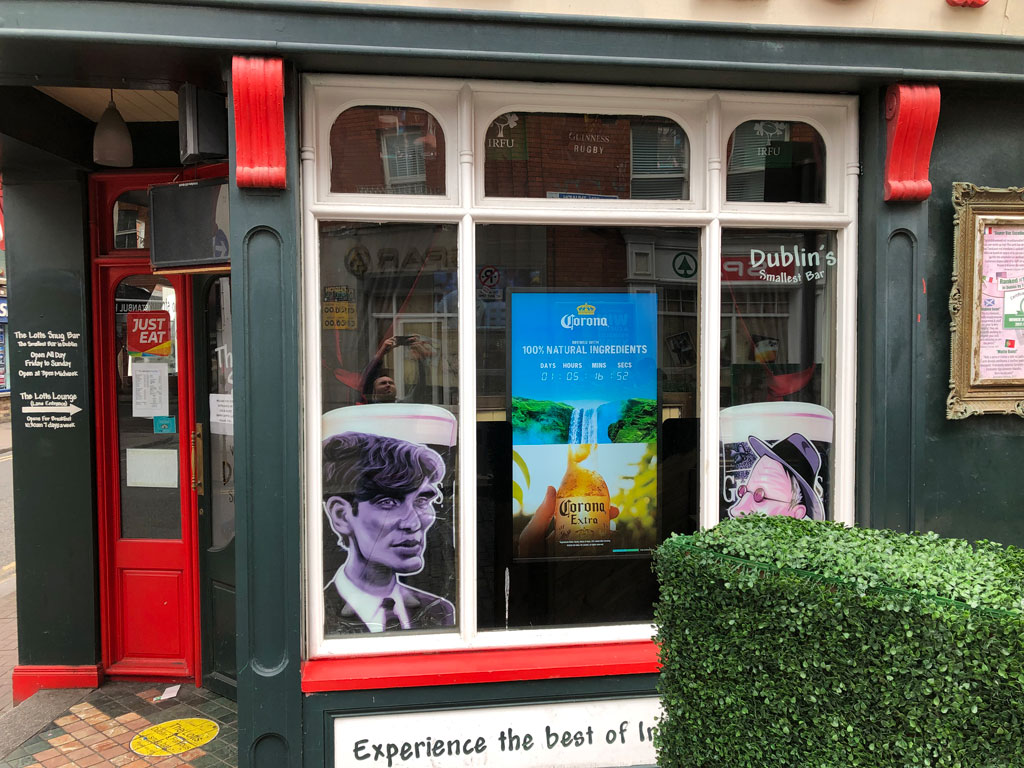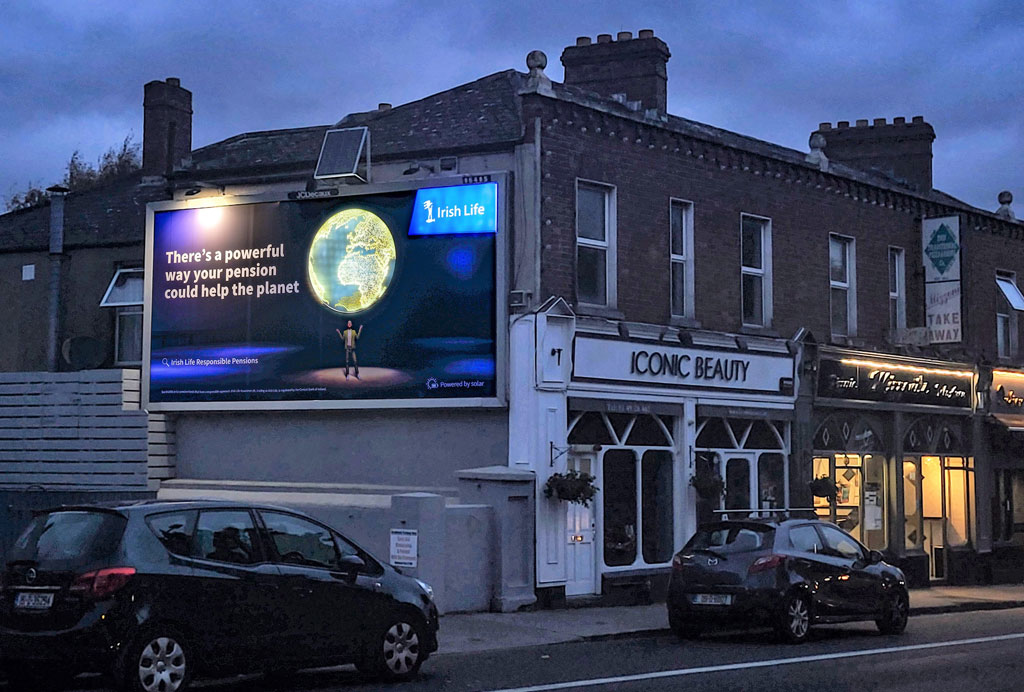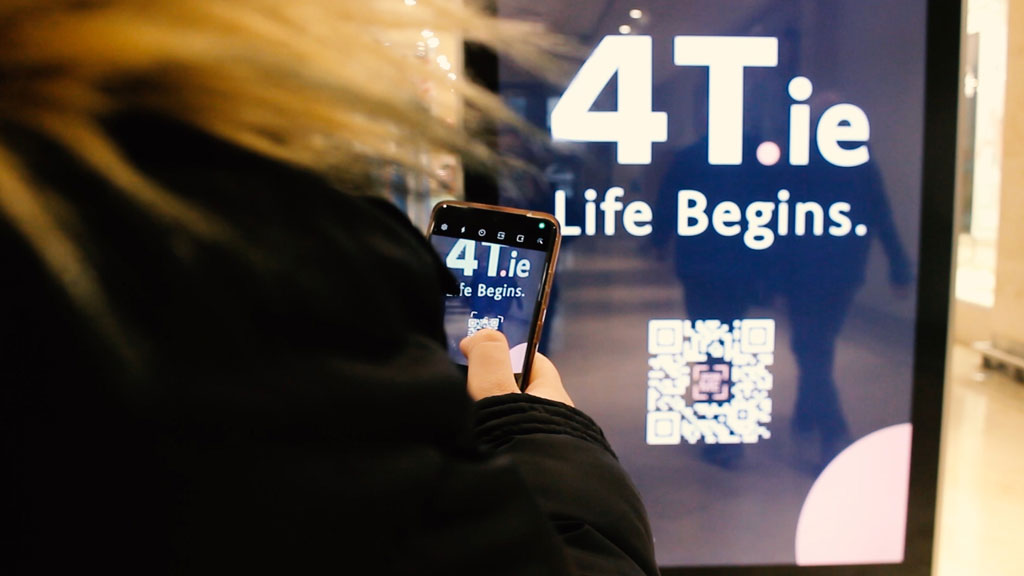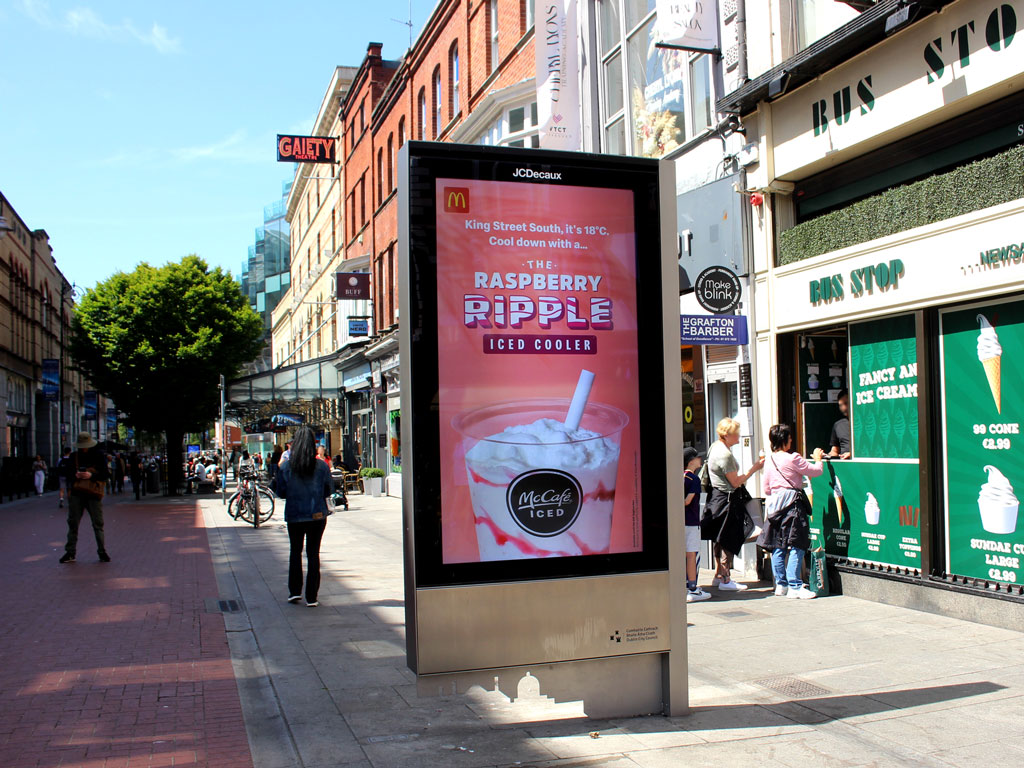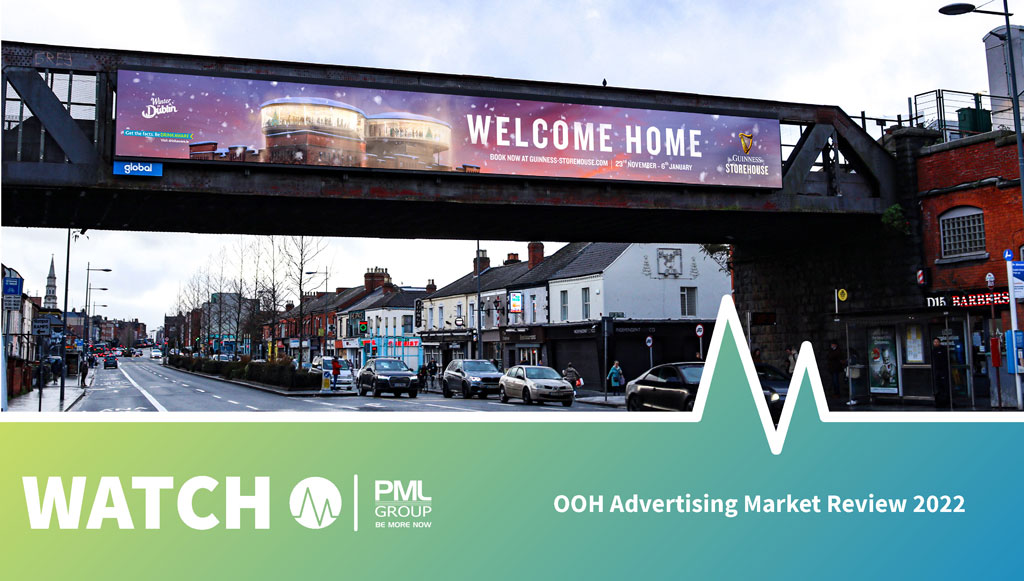James Byrne, marketing manager, PML Group with this week’s Out \ Look on Out of Home.
Touchpoints – Key OOH Trends for 2023
#1: Everything ‘on the go’
Brands can intercept and influence mobile consumers in OOH with instant information curated for relevant search behaviour as they live, work and play in the real world.
Out of Home is primed for growth, and there are many reasons why advertisers should take note. In today’s world, most ad content consumption is a series of personal moments on private screens. Out of Home bridges our public and private worlds. By facilitating IRL to URL, OOH is increasingly extending reach beyond the streets
We have a deep understanding of mobility and consumer movement patterns to finding where consumers are, plus, what they are searching for. What in effect they think, feel and do. Searches that take place in OOH locations are more diverse and valuable to brands than those made at home, as audiences are more primed to receive the message. Not only that, but they also lead to more action.
And with the rollout of 5G and increase in smartphone ownership, the delivery of information ‘on the go’ makes it easier for consumers to interact and brands want this touchpoint connection. The Out of Home medium lends itself well to captivating but non-intrusive content that acknowledges the community it exists in and the demographic it serves. The best performing content will be one that moves and inspires those that come into its path.
So, if effective attention is the endgame for brands, for OOH, this throws a spotlight on context and how consumers engage with brands within everyday environments through habitual behaviours in the real world.
OOH Implications >>
There is an opportunity to interrupt the consumer journey using omnichannel planning; brands can use the power OOH has to drive search, including where, when, why and who people are with when they take action. Search data can be used to inform creative messaging depending on current need state, context, triggers and driving motivation. For example, when to use inspirational messaging vs location-based information or sensory cues to enhance the experience. Consider price promotions, offers, new product, referrals, reviews and ethical messaging to drive share of search.
#2: Comfortable with Uncertainty
Brands can use data and DOOH screens as part of a wider marketing ecosystem, to flex activity and messaging relevant to ever changing consumer behaviour across multiple touchpoint environments.
Geo-political instability and global market volatility require a fleet of foot approach for companies, brands, and citizens alike to navigate a new complex world. There is no one single point of truth, no one data set that will tell us all we need to know about consumer behaviour. Over the coming year, we need to look at multiple data sources to build a comprehensive and informative picture of consumer touchpoints. And with the (slow) death of the cookie, the rise of contextual advertising is ever more pertinent, with OOH being perfectly positioned to prime audiences in multiple environments and mindsets.
Investment in digitization in OOH, an explosion of location data, the advancement of automation and the demand for accessibility have laid the groundwork for DOOH to connect with the wider digital ad ecosystem. Plus we know that Dynamic content optimization increases campaign effectiveness on average +18%, something all brands should have in their toolkit.
OOH Implications >>
Use the tools and technology available to combine multiple data sets, including first party client data, to better understand OOH audiences. The ability to use location data to automate displays, the use of triggers to influence the buying process and dynamic creative to optimize relevance offer the opportunity for brands to be more targeted, efficient, and effective. Brands can utilise OOH to capitalise on key “moments” and consumer state of minds in real-time, resulting in a more human, memorable, and contextual connections.
The Locomizer platform for example, adds to our ability to provide clients with new levels of targeting matching audiences and locations via mobile data. OCS, our proprietary Out of Home Consumer Survey is an integral part of our planning process that enables our teams to efficiently and effectively identify the behaviours and attitudes of consumers and translate these into actionable insights. Furthermore, our MAPS platform supplemented by Census data enables location and demographic specific site selection while our partnership with Locomizer enables targeting using mobile data. These insights and tools overlayed with the industry measure JNOR are used to inform the most appropriate and accurate OOH plan for our clients.
#3: The Green Future is Now
Addressing the tension between growth, sales and sustainability to create new measures of success.
The ad industry has woken up to the impact not only of that which advertising channels have on the environment, but also the high consumer consumption it influences; alongside the knowledge that as part of the problem, we are also part of the solution.
OOH is a Platform for Good. Good for audiences, Good for communities, Good for businesses. It has the dual role of serving the local areas it resides, but also a commitment to be a profitable business. Much of the money invested in the medium gets put back into communities to continually improve local environments, infrastructure and conveniences.
The medium is unique in that it’s both digitizing physical OOH infrastructure and becoming more sustainable in tandem. Major OOH media owners have implemented quality and efficiency strategies across their entire estates, to offset this transformation and drive carbon neutrality across their business, services and products. Through premium site selection, reducing delivery, recyclable products and conversion to energy efficient LEDs tubes.
OOH Implications >>
As companies and brands strive to make the most sustainable media choices, the OOH industry will continue to work on measurement of emissions via media carbon calculators, globally certified accreditation from value chain suppliers and seek to take control of what is controllable. As a one-to-many channel, that uses renewable energy, media owner initiatives such as recycled 6 sheet paper, brands can feel confident that OOH is a trusted, responsible media choice next year to communicate with audiences. There is also an opportunity for brands to re-think their KPI’s and creative messaging. Can sustainable brand purpose live authentically in their OOH ads, and is it an opportunity to use their power of influence for good? Not suitable for all, but for those that can, should. Green means GO-OH.
#4: Creativity (still) rules
Creative is still the 2nd biggest determinant of driving ROI after market share and OOH presents brands an infinite canvas to draw upon.
Out of Home is a one to many medium, a community canvas, continuing to deliver for advertisers through the use of iconic sites enabling big brand messaging at scale. Out of Home is an unblockable, unskippable medium that delivers scale, can sell products and create brand fame. Yet it causes little disruption to audiences: it is non-interruptive; it doesn’t use your data allowance or deplete your battery life; and it gathers little if any of your personal data. In an increasingly fragmented media landscape it is the purest broadcast medium that can quite literally stop people in their tracks.
Creating OOH has never been more exciting, however basic old school rules don’t change in terms of what makes an effective OOH creative. Bold and contrasting colours, being minimal with copy, maximum on branding; to make sure the consumer immediately knows it’s you. What has changed is the range of storytelling available to brands through technology and data, and what that means for the coming year. Pre-testing of artwork through tools like Preview’s AI tech can maximise attention making copy the very best it can be.
Creative technology and formats such as 3D anamorphic and scannable QR codes are transforming OOH into a destination for brands to make content. As a result, OOH ads can extend beyond the physical location and bought impressions, and shared in social channels, integrated into influencer tactics, and become a PR fixture in the water cooler moment. Existing creative technology such as 3D, will be cemented into a more scaleable, affordable proposition on multiple formats.
In terms of tone, do not be put off using emotional and entertaining advertising, just make sure it is appropriate to the mood of your customers. Our research findings are currently supporting the use of advertising that demonstrates humanity through warmth, generosity, and humour; and if it sits within your brand DNA, there is big value in offering consumers a fun, engaging respite!
OOH Implications >>
This year will be the battle of the brands; best creative idea, and execution wins!
And for brands who want to really stand out, customized posters are a proven way to achieve more attention and create more engaging shareable conversations with their audiences. From our research, 74% of people agreed that customized posters are more noticeable, 68% said they made a brand look more innovative and creative and 66% agreed they were more memorable. Following our 4T.ie campaign, 55% of respondents agreed that they would like to see more OOH campaigns use QR codes. QR, AR and XR will offer pure play online and physical retailers and brands an opportunity to ‘extend the store’, making ads shoppable, giving consumers new ways to shop, travel, learn, explore and be entertained.
#5: One size doesn’t fit all
Brands can play to OOH strengths as a trusted channel for both brand building and performance in 2023.
“Stopping advertising to save money is like stopping your watch to save time.” – Henry Ford
Brands tend to cut back their ad spend during challenging periods, but this is often a misguided approach that causes longer-term brand damage.
There is no denying the impact rising inflation and interest rates is having on increasing the cost of living and decreasing consumer confidence and spending power. How we respond will be dependent on social status, shifting priorities, perceived value of products and services, motivation, outlook and means.
As a result, some brands will find it hard to win share of a shrinking wallet this year.
But it’s not all doom and gloom. People are still out there; they’re just going to be more selective in what they choose to pay attention to. It’s a matter of finding them, and then surfacing the right message, to the right audience, at the right time creating the touchpoint.
And when you think about the OOH channel, the media infrastructure is actually designed around patterns of consumer behaviour; targeting triggers around context, locations and communities, so we’re in a good place to answer these new challenges.
OOH Implications >>
Brands can use OOH’s brand building power to fuel long term growth and brand equity, avoiding (where possible) falling foul of ‘shortermism’. With rising customer cynicism, brands can use OOH’s trustworthy credentials on the frontline of everyday life to deliver their message. If we understand nuanced consumer behaviours, what they currently need and how brands plan to meet that need; and then apply relevant OOH strategies, tactics and solutions, we’re confident brands can strike the right balance in 2022.
OOH is well-positioned by design to be on the frontline of everyday life and cultural zeitgeists. It’s unmissable, spanning multiple environments with contextually nuanced opportunities to hold conversations with audiences, whatever their current mood.
***************
WATCH 2022 Report
Last week in Out \ Look we published some details from our WATCH OOH Market Review for 2022. The full report can be accessed HERE.







